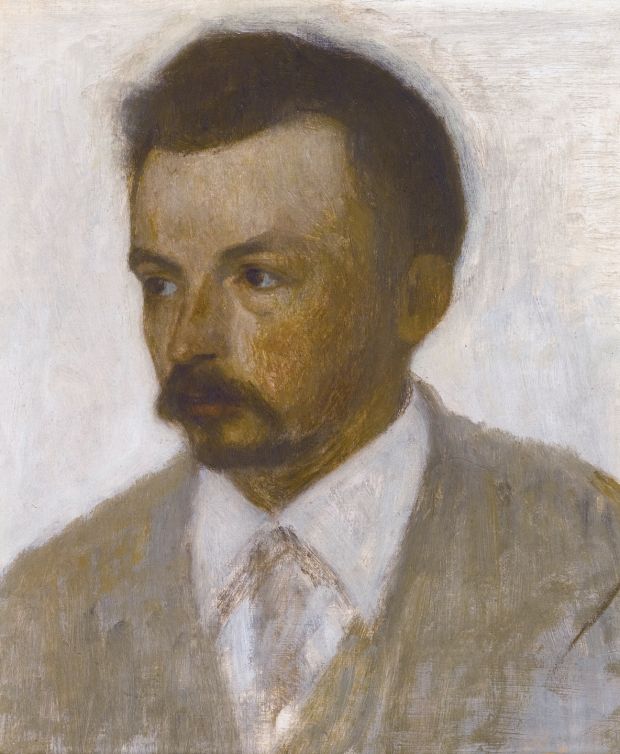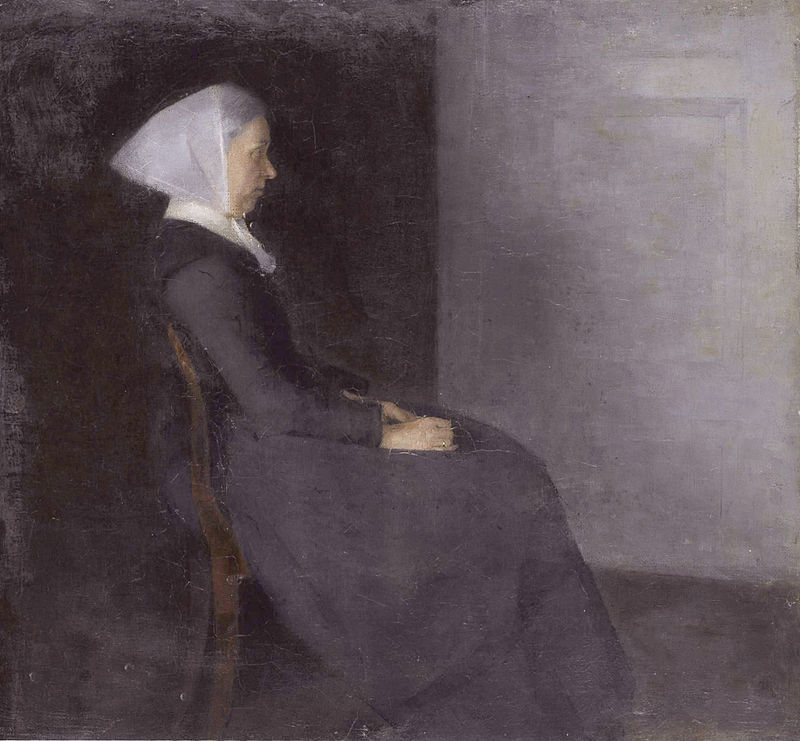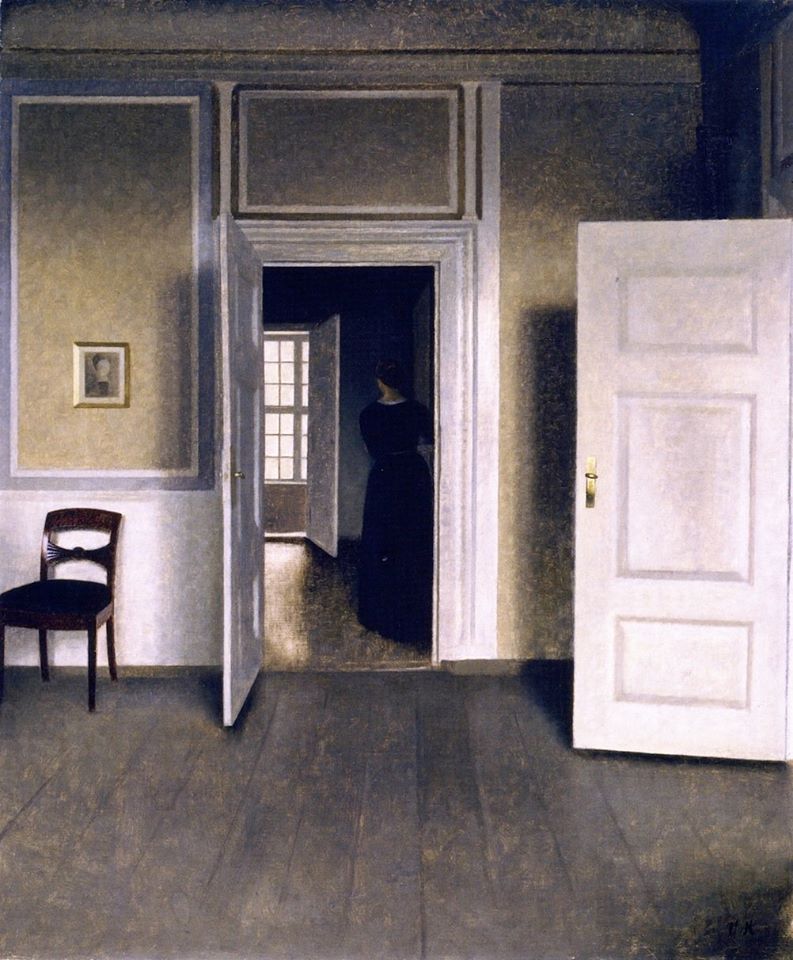Misplaced by History-Artists Worth Knowing:
Vilhelm Hammershøi
Vilhelm Hammershøi (1864-1916) was a Danish painter known for his meditative interiors and landscapes. Created with a sensitivity to both light and spatial construction, his muted paintings use a limited palette to great effect. His figures are often positioned away from the viewer and project an air of mystery.
Hammershøi was born in 1864 in Copenhagen, Denmark. The son of a well-to-do merchant, he studied drawing from the age of eight before embarking on studies at the Royal Danish Academy of Fine Arts.
By the age of 17, Hammershøi had chosen his themes: portraits of family and close friends, spare interiors and a few landscapes. He shunned the lively subjects and colors favored by his contemporaries, limiting his palette to subdued grey, blue, black, white and ochre.
Hammershøi worked mainly in his native city, painting portraits, architecture, and interiors. He is most celebrated for his interiors, many of which he painted in Copenhagen. By 1885, his work had taken on the formal and emotional characteristics of Dutch artist Johannes Vermeer. His early works, with their simplicity and recording of the “banality of everyday life”, enjoyed critical acclaim. Artists and literary figures of the time, among them Emil Nolde and Rainer Maria Rilke, admired his work and sought out his company. They remarked on Hammershoi’s retiring manner and reluctance to talk.
Hammershøi took few risks and never explained his art. As his library of art journals testifies, Hammershøi was exposed to contemporary art movements but consciously chose to ignore their “contaminating” effects.
Painting slowly, Hammershøi completed only 400 canvases. He expressed admiration for only one other painter, the American James McNeill Whistler. As an homage to Whistler’s iconic portrait of his mother, Hammershøi painted his mother Frederikke seated in profile.
Hammershøi’s also contributed to a new model in Scandinavian interior design, with his rejection of the cluttered nineteenth-century aesthetic in favor of a simplicity that bordered on the ascetic.
Successful during his own lifetime, Hammershøi died in 1916 in Copenhagen. In 2008, the Royal Academy of London put on the first major exhibition of his work in Britain, “Vilhelm Hammershøi: The Poetry of Silence.” Today, the artist’s works are held in the collections of the Metropolitan Museum of Art in New York, the Musée d’Orsay in Paris, the National Gallery in London, and the Ordrupgaard Collection in Charlottenlund, Denmark, among others.



